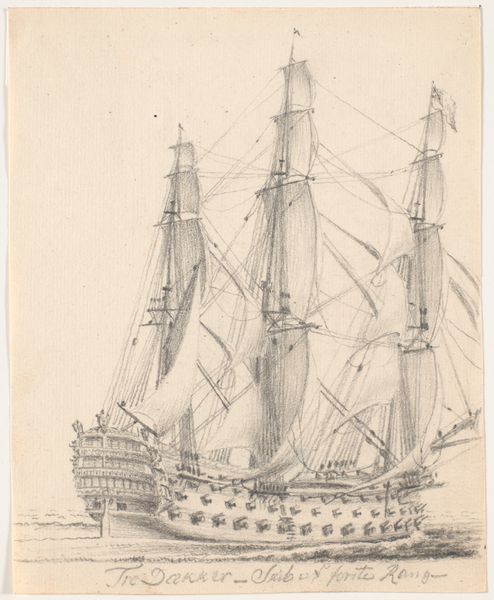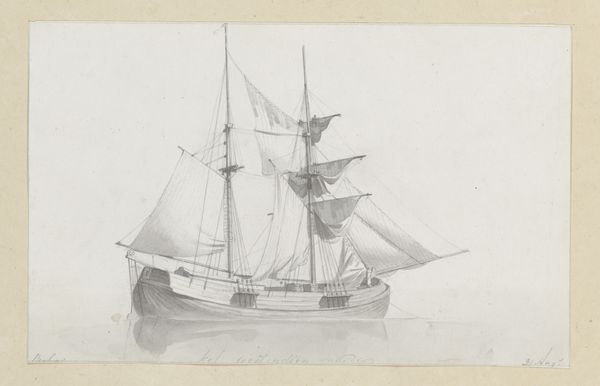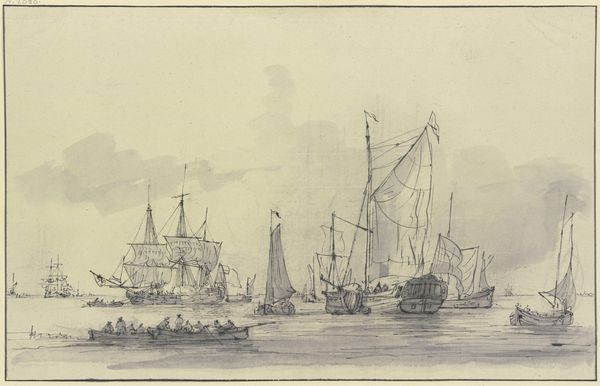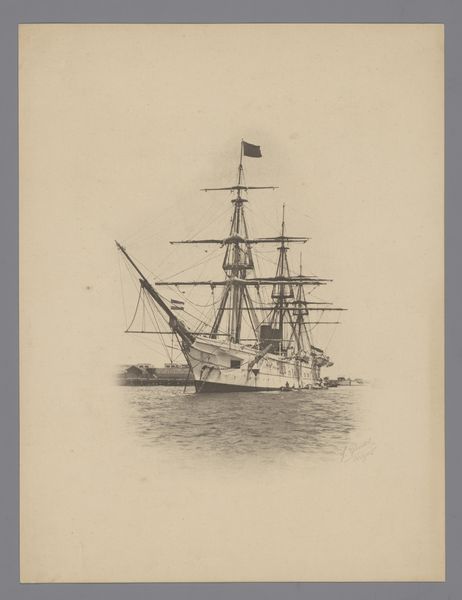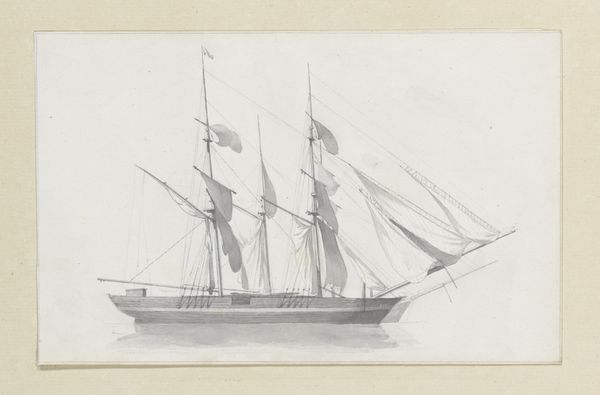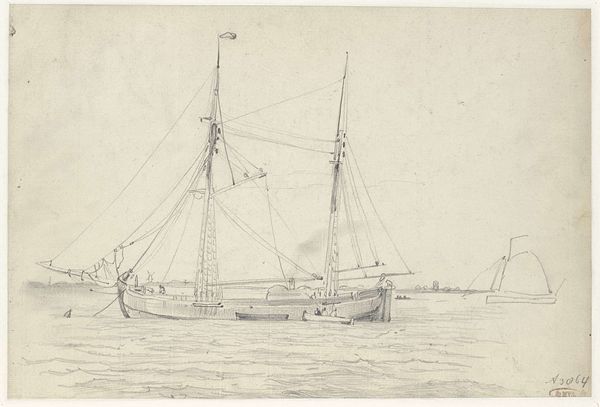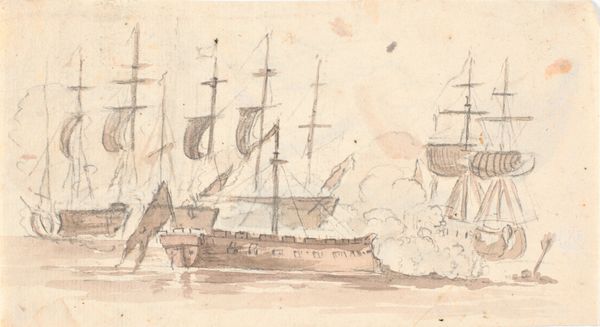
Dimensions: height 201 mm, width 280 mm
Copyright: Rijks Museum: Open Domain
Curator: Dirk Arnoldus Tavenraat's pencil drawing, "Stoomschip Marianna," made in 1852, captures a detailed view of a steamship at sea. It's currently held in the Rijksmuseum. Editor: It evokes a sense of somber might, doesn't it? The detail in the rigging and the hull suggests both human ingenuity and, potentially, a tool of colonial expansion. Curator: Absolutely. Consider the social and industrial context: the 19th century saw rapid advancements in shipbuilding. These weren't just transport vessels, but instruments reflecting global power dynamics and evolving trade routes. The availability and refinement of graphite pencils allowed for incredibly detailed, almost photographic depictions of these machines. Editor: So the material itself is a key factor? The shift from more rudimentary tools directly impacts representation. The pencil facilitates this hyper-realistic, technical illustration. And what kind of labor went into building this? What lives were impacted in creating these powerful steamships? It’s easy to look past the human element when confronted by its scale and geometry. Curator: Precisely. Think of the steel and iron industries booming to meet the demand, the shift of labour toward those manufacturing centers, and, of course, the raw materials sourced, frequently exploiting labor and resources far from home. Tavenraat isn't merely depicting a vessel, but rather illustrating the visible face of burgeoning capitalism and industrial might, all achieved through distinct, observable applications of labor to raw material. Editor: So in examining its function, and the historical backdrop in concert, the Marianna transforms. The piece becomes a visual artifact revealing labor, the cost of “progress” and how new markets begin influencing political agency across oceans. We cannot help but recall contemporary debates over environmental concerns to exploitative economic policies. Curator: Yes, the vessel and the very graphite, they all evidence intertwined systems of production, consumption, and colonial ambition. Editor: It makes one reflect on the legacy of the industrial revolution, one deeply felt even today. Curator: Indeed. An impactful reminder rendered through simple graphite and paper.
Comments
No comments
Be the first to comment and join the conversation on the ultimate creative platform.

